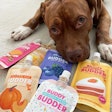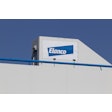Sales of pets are half of Petland's total business. The franchise chain places over 50,000 puppies per year. But recently Petland has been focusing on increasing sales of petfoods and other consumable products. Petfood sales account for about 12% of Petland's total sales, while at Petsmart and Petco, petfood sales are 50% of the total.
I recently visited Petland's corporate headquarters in Chillicothe, Ohio, USA, where I had a chance to talk with some of the executives there, and then follow up with more questions. Here's some of what they had to say.
Petfood predictions
Tony Neff, Petland's director of merchandising services, predicts the petfood industry will continue to see growth equal to the increase in the household popularity of dogs and cats. "That growth," he says, "will trend toward natural, holistic and organic formulas as knowledgeable consumers spare no expense in providing the very best nutrition for their beloved pets."
Neff sees one of Petland's biggest challenges as growing sales in its Nutrition Centers by consistently educating and training their pet counselors, and subsequently customers. "Since we cannot compete with the chain retailers on price," he says, "our market advantage is consumer influence and interaction at the point of sale. Our value equation for the consumer is our knowledge of nutrition and our ability to impart that knowledge effectively everyday."
Joe Watson, vice president of retail operations, sees Petland's in-store Nutrition Centers as a major accomplishment. He says they are "committed to delivering a strategic mix of high-quality dog and cat foods in a footprint smaller and more compact than our competitors." He points out that their new-mix Nutrition Centers feature life stage, breed-specific and solution-based products that complement one another in uniqueness. "We do not compete on depth, breadth and price," says Watson. "Our specialty is to exceed customers' expectations through education and the one-on-one interface."
Reactions to recalls
The cultural curve toward the humanization of pets is a phenomenon that started with superpremium foods in the 1980s, according to Neff. "Today, the word superpremium still stands for better-than-before," he notes, "but the end products are far more sophisticated."
"The recalls stunned the superpremium petfood buyer who has traditionally paid more to receive a higher level of nutrition for their pet," says Neff. He notes that many were disappointed to learn about ingredient sourcing problems. They wondered why they "paid more and got less sophistication." He says it was a wake-up call that now causes consumers to read more labels, ask more questions and seek more natural, home-grown ingredients, and yes, to pay even more to offer the very best to their pets.
"The negative impact of the recalls on sales, store traffic and image was brief and minimal," asserts Julie Washburn, Petland's public relations and community service coordinator. "More often than not, the educated consumer seeks only the truth. Reassurance and trust are easy when you have the current answers and the alternative brands," says Washburn. "Petfood sales today have never been stronger at Petland."
Petland's advantages
"Petland stores enjoy a market advantage based upon three key differentiators: our pets, our pet counselors and our store presentation," according to Watson.
Petland's president, Frank Difatta, thinks the future for Petland is bright because of its differentiation from the generally "pet-less" chain store concept. "While other pet specialty formats strive to look, act and price alike," says Difatta, "Petland stores stand alone as exciting destinations for both browsers and buyers. We attract consumers because we are fun. We are fun because we have pets.
"Petland's mission everyday," says Difatta, "is to match the right pet with the right customer and meet the needs of both. We are dedicated to enhancing our customers' knowledge and enjoyment of the human-animal bond."





.png?auto=format%2Ccompress&fit=crop&h=167&q=70&w=250)











